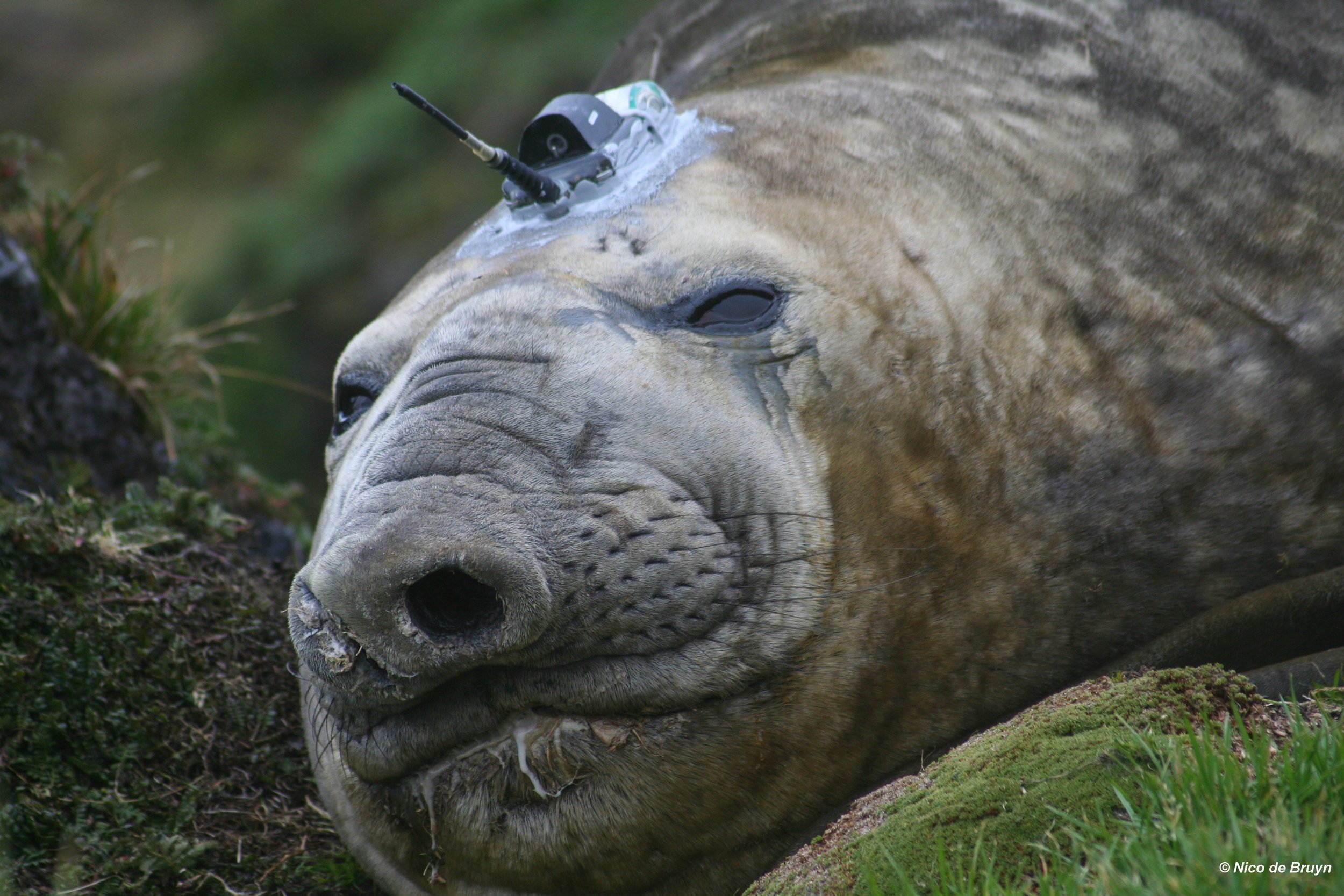Trend changes in southern fur seal pup populations at Marion Island
/A Subantarctic fur seal mother and her pup (Picture: M. WEGE)
For scientists and conservationists to make judicious decisions about the conservation practices of any population we need to know what the current status of the population is - is the population increasing or decreasing in numbers? Continued monitoring allows us to understand how various external or internal factors influence a population’s growth. Internal factors could include competition between individuals, whereas external factors could be human disturbance, climate change or disease.
Like all fur seals globally, the fur seals of Marion Island (46° 5.25’ S & 37° 51.46’ E; Figure 1) were hunted from the 17th century onwards for their furs. Sealing continued intermittently until 1931 when only a handful of seals remained on Marion Island. These were all Subantarctic fur seals (Arctocephalus tropicalis).
Today, Marion Island is home to the largest sympatric population (different species co-occur) of Subantarctic and Antarctic fur seals (Arctocephalus gazella) in the world. Both these species recovered spectacularly after the era of sealing had ended and by 2004 ~15 000 Subantarctic and ~700 Antarctic fur seal pups were born on Marion Island. We present our most recent pup population estimates for both species breeding here.
Antarctic fur seals:
Between 2004 and 2013 the Antarctic fur seal population was still increasing, but the rate of change has decreased from 17% in 2004 to 4% in 2013. We suspect this reduced growth in pup production is the result of saturation at the main breeding beach where more than 75% of all pups are born. Over the last 12 years several new breeding beaches have been established around the island. We postulate that with time these new breeding beaches will start to thrive and population growth will increase. We are also currently exploring other counting methods to improve potential error around our estimates.
Subantarctic fur seals:
Surprisingly, the Subantarctic fur seal pup population declined by 46% (95% credible interval 43%–48%) between 2004 (mean = 15,260, credible interval: 14,447– 16,169 pups) and 2013 (mean = 8,312, credible: 7,983–8,697; Figure 2). Your first question might be whether this was perhaps just an anomalous year with exceptionally low pup production. This is where annual counts done on a subsection of the island's coastline come in handy. From 2007 until 2011 we have seen a consistent drop in pup numbers at the beaches counted annually and between 2012 and 2015 it seems pup numbers have stabilised (Figure 3). Furthermore, the biggest decline in pup numbers were at the highest density beaches on the west coast of Marion Island. The first logical explanation is that the number of seals have just grown too numerous that bulls tend to crush pups or females fail to bond with their pups after birth and subsequently abandon them. However, all the dead pups on the beaches are also counted and between 2004 and 2013 there was no mentionable change in pup mortality on the beaches. This suggests other forces are at play.
What these forces are, we are currently unsure about. However, it is most likely not just one contributing factor but a combination of several. Population dynamics are never simple. The Marion Island Marine Mammal Programme has an intensive fur seal programme aimed at asking various questions to solve this mystery. This includes tracking fur seal females of both species to see where they are foraging and how hard they are working while foraging (inferred from diving behaviour), what they eat (diet) and how long they are staying away from their pups. Lastly, we then also weigh these females’ pups to see how successful the female has been at obtaining food.
Lastly, it should be stressed that a reduction in numbers does not necessarily mean that animals are dying. Emigration to other colonies could also contribute to population reduction. That means, populations elsewhere in the Southern Ocean could perhaps be growing due to an influx of animals. However, to determine whether this is in fact the case we need to know what is happening to the entire Southern Ocean population of Subantarctic and Antarctic fur seals, not just on Marion Island, before we can make assumptions on the growth of the species.
Written by: Mia Wege [mwege@zoology.up.ac.za]
Reference:
Wege, M., Etienne, M.-P., Oosthuizen, W.C. , Reisinger, R.R., Bester, M.N. & de Bruyn, P.J.N. (2016) Trend changes in sympatric Subantarctic and Antarctic fur seal pup populations at Marion Island, Southern Ocean. Marine Mammal Science, DOI: 10.1111/mms.12306
The full scientific article can be obtained from the Journal of Marine Mammal Science or by contacting the authors directly.
Acknowledgements:
This work would not have been possible without logistical support provided Department of Environmental Affair, funding provided by the National Research Fund's South African National Antarctic Programme. Greg Hofmeyr helped plan the 2013 total island count, gave valuable insight and passed on a wealth of experience. Dawn Cory-Toussaint, Cheryl Tosh, Santjie du Toit, Mashudu Phalanndwa, Paul Visser, Derek van der Merwe, Hugh Purdon, Christiaan Conradie, Shadrack Podile, Thomas Mufanadzo, Johan van der Vyver, Nadia Hansa, Daniël Kotzé and Liezl Pretorius were instrumental in either helping with or doing counts themselves.






















